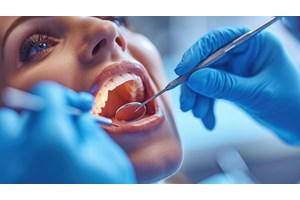Researchers explore the mouth’s response to oral disease using a laboratory model
Published: 25/03/2024
A study at the University of Plymouth has developed a new 3D model of the oral mucosa, the tissue lining the inside of the mouth.
Researchers have created a three-dimensional model of the oral mucosa that can be used in studies to test its response to a range of bacterial and other infections. The model, created by experts in dentistry and immunology at the university, is formed from a collagen hydrogel containing cell types commonly found in the human body.
In a series of tests, the researchers analysed the model’s response to a range of pathogens, including Candida albicans and Staphylococcus aureus.
The team found it behaved similarly to responses observed in other studies involving real patients, indicating it could be implemented for the wider study of oral infection.
Specifically, they plan to use it to assess how the oral mucosa—the tissue similar to skin that lines the inside of the mouth, including the inside of cheeks and lips—might respond to long-term denture wear.
With the epithelium not limited to the oral cavity, the researchers also believe such models may also have a potential research role for illnesses of the digestive system, such as Crohn’s disease.
The research was published in the Journal of Tissue Engineering, one of the world’s leading scientific publications covering research in the field of tissue engineering and its clinical application.
Vehid Salih, study leader and associate professor in oral and dental health research, said, “Developing three-dimensional tissue models is a critical element of our dental research. They offer a degree of versatility that mimics the in vivo physiology of a specific tissue, as well as a reproducible and controllable process that we can use to investigate particular pathologies and diseases. The results we have seen from this particular model suggest it is a recreation of the oral cavity that we can use for a wide range of dental research. That includes the testing of oral healthcare products or modelling oral cancer invasion, periodontal disease and denture stomatitis.
“The model could also be developed further to offer the potential of determining the wider immune response to infection through the incorporation of multiple immune-cell types.”
The model developed through this study is already being expanded through a project using lab-created models to explore the long-term physical impacts of wearing dentures.
Surveys have suggested that as many as 15 per cent of those visiting dental practices in England have either partial or complete dentures, with that number expected to increase significantly over the coming years. However, while dentures are individually moulded and fitted, little research has been done on how wearing them affects the lining of patients’ mouths.
The new project, led by Simon Whawell, will allow researchers to carry out detailed and repeated analyses of how tissue responds to the repeated physical pressure associated with functional dentures.
Author: N/A













